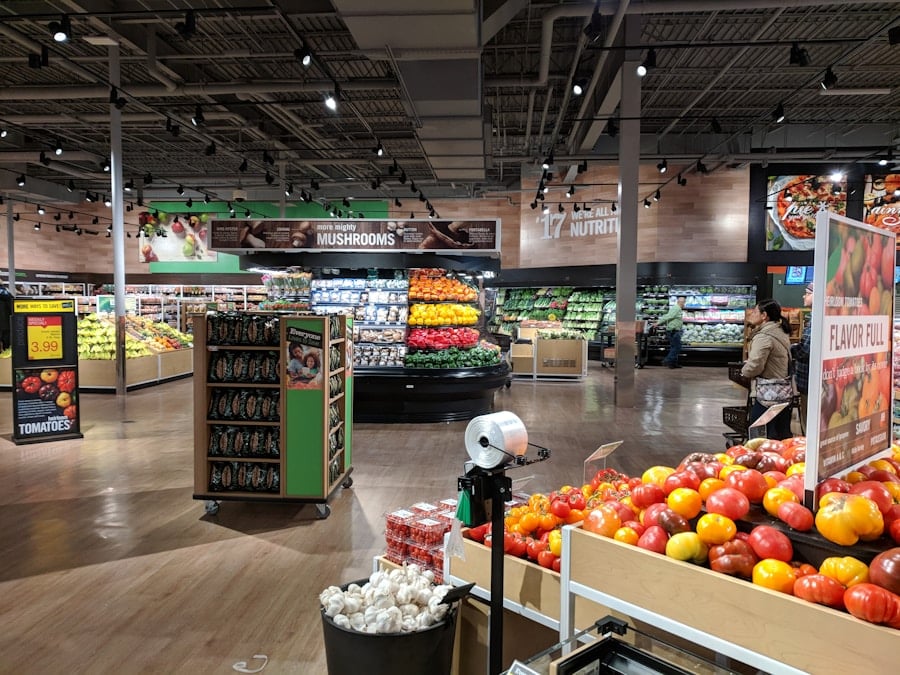The advent of artificial intelligence (AI) has revolutionized numerous sectors, and one of the most significant applications is in the realm of smart assistants. These AI-driven systems are designed to enhance efficiency, streamline operations, and improve user experiences across various industries. Smart assistants leverage machine learning algorithms, natural language processing, and data analytics to perform tasks that traditionally required human intervention.
From virtual personal assistants like Siri and Alexa to sophisticated enterprise solutions, AI-driven smart assistants are becoming integral to modern life. In the context of grocery and supply management, AI-driven smart assistants are transforming how businesses approach inventory management and restocking processes. By analyzing vast amounts of data in real-time, these systems can predict demand fluctuations, optimize stock levels, and automate ordering processes.
This not only reduces the burden on human staff but also minimizes errors associated with manual inventory management. As grocery retailers and suppliers increasingly adopt these technologies, understanding their role and impact becomes essential for navigating the future of supply chain operations.
Key Takeaways
- AI-driven smart assistants are revolutionizing the way businesses manage restocking operations in the grocery and supply industry.
- These smart assistants play a crucial role in automating and optimizing the restocking process, leading to improved efficiency and cost savings.
- Businesses can benefit from using AI-driven smart assistants for restocking through enhanced accuracy, real-time inventory management, and predictive analytics.
- Despite their advantages, AI-driven smart assistants also face challenges such as data security, integration complexities, and potential errors in decision-making.
- Successful implementation of AI-driven smart assistants in restocking requires careful planning, training, and seamless integration with existing systems.
The Role of AI-Driven Smart Assistants in Grocery and Supply Restocking
AI-driven smart assistants play a pivotal role in grocery and supply restocking by providing real-time insights into inventory levels, consumer behavior, and market trends. These systems utilize advanced algorithms to analyze historical sales data, seasonal trends, and even external factors such as weather patterns or local events that may influence purchasing behavior. By synthesizing this information, smart assistants can forecast demand with remarkable accuracy, allowing businesses to maintain optimal stock levels and reduce instances of overstocking or stockouts.
Moreover, these smart assistants can automate the ordering process by integrating with suppliers’ systems. When inventory levels fall below a predetermined threshold, the AI can automatically generate purchase orders based on predicted demand and current stock levels.
The ability to respond swiftly to changing consumer preferences is crucial in a competitive market where customer satisfaction directly impacts sales.
Benefits of Using AI-Driven Smart Assistants for Restocking

The benefits of employing AI-driven smart assistants for restocking are manifold. One of the most significant advantages is the enhancement of operational efficiency. By automating routine tasks such as inventory tracking and order placement, businesses can free up valuable human resources to focus on more strategic initiatives.
Employees can dedicate their time to customer service or other critical areas that require human judgment and creativity, thereby improving overall productivity. Additionally, AI-driven smart assistants contribute to cost savings. By optimizing inventory levels and reducing waste associated with overstocking or spoilage, businesses can significantly lower their operational costs.
For instance, a grocery store that utilizes an AI system to predict demand accurately can minimize excess inventory, which often leads to markdowns or losses due to perishable goods expiring before they are sold. Furthermore, these systems can help identify slow-moving items that may need promotional strategies to boost sales, ensuring that every product has the best chance of being sold.
Challenges and Limitations of AI-Driven Smart Assistants in Restocking
Despite their numerous advantages, the implementation of AI-driven smart assistants in restocking is not without challenges. One significant limitation is the reliance on data quality and availability. For AI systems to function effectively, they require access to accurate and comprehensive data sets.
In many cases, grocery retailers may struggle with fragmented data sources or outdated information that can lead to inaccurate predictions and poor decision-making. Another challenge lies in the integration of AI systems with existing infrastructure. Many grocery stores operate on legacy systems that may not be compatible with modern AI technologies.
This can create barriers to implementation, requiring significant investment in new software or hardware solutions. Additionally, there may be resistance from employees who fear that automation could threaten their jobs or disrupt established workflows. Overcoming these hurdles necessitates a thoughtful approach that includes training staff on new technologies and demonstrating the value of AI-driven solutions.
Implementation and Integration of AI-Driven Smart Assistants in Grocery and Supply Management
The successful implementation of AI-driven smart assistants in grocery and supply management involves several key steps. First and foremost is the assessment of current processes and identifying areas where AI can add value. This requires a thorough analysis of existing inventory management practices, sales patterns, and customer preferences.
By pinpointing inefficiencies or gaps in the current system, businesses can tailor their AI solutions to address specific needs. Once the areas for improvement have been identified, the next step is selecting the right technology partner or platform that aligns with the organization’s goals. This may involve evaluating various AI vendors based on their capabilities, scalability, and integration options with existing systems.
After selecting a solution, businesses must focus on data integration—ensuring that all relevant data sources are connected to the AI system for accurate analysis. Training employees on how to use the new technology is also crucial for successful implementation. Providing comprehensive training programs can help alleviate concerns about job security while empowering staff to leverage AI tools effectively.
Continuous monitoring and evaluation of the system’s performance will allow businesses to make necessary adjustments over time, ensuring that the AI-driven smart assistant remains aligned with evolving market conditions.
Case Studies of Successful Implementation of AI-Driven Smart Assistants in Restocking

Walmart’s Advanced Inventory Management System
One notable example is Walmart, which has implemented an advanced inventory management system powered by AI algorithms. By analyzing sales data from its vast network of stores, Walmart’s system can predict demand for thousands of products across different locations. This allows the retailer to optimize its supply chain operations significantly, reducing stockouts and improving customer satisfaction.
Kroger’s Embrace of AI Technology
Another compelling case is that of Kroger, which has embraced AI technology to enhance its inventory management practices. Kroger’s use of machine learning algorithms enables it to analyze customer purchasing patterns and adjust inventory levels accordingly. The company has reported substantial improvements in its ability to maintain optimal stock levels while minimizing waste from perishable goods.
Improved Operational Efficiency and Enhanced Customer Experience
By leveraging AI-driven insights, Kroger has not only improved operational efficiency but also enhanced its overall customer experience. These examples demonstrate the potential of AI-driven smart assistants to revolutionize the restocking process, leading to improved supply chain management and increased customer satisfaction.
Future Trends and Developments in AI-Driven Smart Assistants for Grocery and Supply Restocking
As technology continues to evolve, the future of AI-driven smart assistants in grocery and supply restocking looks promising. One emerging trend is the increasing use of predictive analytics powered by machine learning models that can learn from new data inputs over time. This will enable smarter forecasting capabilities that adapt to changing consumer behaviors more effectively than ever before.
Additionally, advancements in natural language processing (NLP) will likely enhance the interaction between human operators and AI systems. As these technologies become more sophisticated, employees will be able to communicate with smart assistants using natural language queries, making it easier to retrieve information or generate reports without needing extensive technical knowledge. Moreover, as sustainability becomes a more pressing concern for consumers and businesses alike, AI-driven smart assistants will play a crucial role in optimizing supply chains for environmental impact.
By analyzing data related to carbon footprints and waste generation, these systems can help organizations make more sustainable choices regarding sourcing and inventory management.
The Impact of AI-Driven Smart Assistants on the Future of Restocking Operations
The integration of AI-driven smart assistants into grocery and supply restocking operations represents a significant shift in how businesses manage their inventories. By harnessing the power of data analytics and machine learning, these systems offer unprecedented insights into consumer behavior and market trends, enabling organizations to optimize their supply chains effectively. While challenges remain in terms of data quality and integration with existing systems, the potential benefits—ranging from increased efficiency to cost savings—are compelling.
As more companies adopt these technologies, we can expect a transformation in how grocery retailers operate, leading to improved customer experiences and more sustainable practices within the industry. The future of restocking operations will undoubtedly be shaped by advancements in AI-driven solutions that empower businesses to respond swiftly to changing market dynamics while maintaining high levels of service quality.
If you’re interested in exploring the best tablets for students in 2023, check out this article for some great options. These tablets can be a valuable tool for students looking to stay organized and efficient in their studies.

